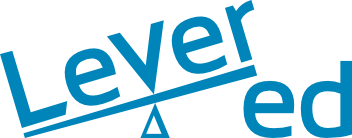
The hard work and success of students can be visualized by looking at the achievement levels where we saw over 50% growth in "Exceeding Standards" and a collapse of the "Standard Not Met" category, for the same cohort of students.
Overall, students exceeding standards at Salt Creek grew by 10%, while the state dropped 1%.
63% of English Learners at Salt Creek were proficient versus the California average of 18%.
Economically Disadvantaged students saw 224% growth over California.
Students with Disabilities were 64% proficient versus 18.5% in California.
Chula Vista Elementary School District in San Diego is the largest K-6 district in California with over 30,000 students, with 32.9 % English Learners and 53.6 % Economically Disadvantaged students. Chula Vista is incredibly diverse, both culturally and economically, with schools in predominantly affluent neighborhoods as well as areas where the median home price is under $100,000.
Our case study is focused on two schools, Salt Creek Elementary and Montgomery Elementary that represent the cultural diversity and wide spectrum of economic realities.
Both schools have since experienced outstanding increases in their California Assessment of Student Performance and Progress (CAASPP) scores. They attribute the success to increased student engagement, along with Levered's integrated support for English Language Learners and the individualized, competency-based curriculum that helps teachers differentiate learning.

1. True Standards Alignment - Every activity is mapped to a standard and subskill and we incorporate Common Core's eight mathematical practices into the individual, paper-and-pencil group work, and whole class activities.
2. Adaptive, context-rich content - Our individualized curriculum is made using research-backed strategies using real-world animated contexts that move to more abstract concepts as students build mastery. The activities anticipate common mistakes and offers real-time feedback based on the type of error made.
3. Competency-based instruction - Learners must show mastery in their work before progressing, giving students that are struggling the time to work through basic concepts while grade-level and above learners have the runway to go deeper into topics.
4. Ongoing assessment - Our online curriculum is assessing students in real-time as they work through their individualized work. Assessment data is instantly available to the teachers to make decisions about what students should work on next as well as providing actionable data where students are struggling at the moment.
5. Data-informed planning - Our teacher dashboard helps teachers to decide on interventions and enrichment opportunities based on real-time data. Teachers get live alerts about student requests for help, struggles, and progress. Common areas of struggle are grouped, giving the teacher the ability to plan whole-class activities or conduct small-group interventions with a single click.
Fourth graders at Salt Creek improved their CAASPP scores by 137% of the state average in the 2016/2017 school year—their first year using the platform—and by 172% the following year.
Fourth grade ELL students improved their scores on the state math test by more than 60 percent and moved up ten places for the overall district.